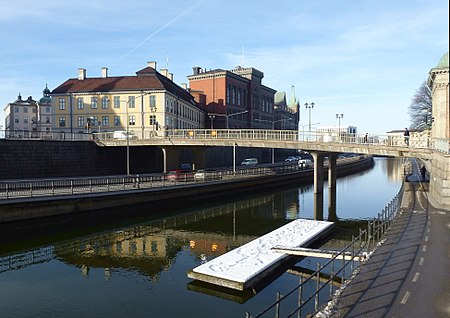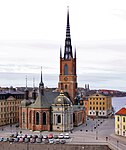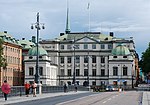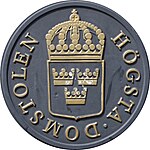Riddarholmsbron
1958 establishments in SwedenBridges completed in 1958Bridges in Stockholm

Riddarholmsbron (Swedish: [ˈrɪ̂dːarhɔlmsˌbruːn], "The Knights Islet bridge") is a bridge in Gamla stan, the old town in central Stockholm, Sweden, leading from the square Riddarhustorget on Stadsholmen to the smaller neighbouring island Riddarholmen.
Excerpt from the Wikipedia article Riddarholmsbron (License: CC BY-SA 3.0, Authors, Images).Riddarholmsbron
Centralbron, Stockholm Riddarholmen (Södermalms stadsdelsområde)
Geographical coordinates (GPS) Address Nearby Places Show on map
Geographical coordinates (GPS)
| Latitude | Longitude |
|---|---|
| N 59.325 ° | E 18.065277777778 ° |
Address
Gamla riksarkivet
Centralbron
114 27 Stockholm, Riddarholmen (Södermalms stadsdelsområde)
Sweden
Open on Google Maps










